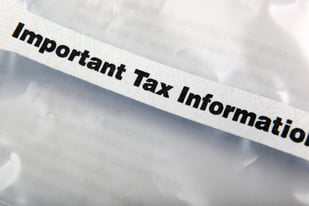 Ready or not - here it comes! Tax filing can be confusing and stressful. Here's a few things you can do to make this process a little smoother.
Ready or not - here it comes! Tax filing can be confusing and stressful. Here's a few things you can do to make this process a little smoother.
Keep in mind, this guide is for informational purposes only and is not a replacement for real-life advice, so make sure to consult your tax professional before modifying your strategy.
The first item to note is that the Internal Revenue Service has announced that tax season will start a little later than usual this year; they will not begin accepting and processing 2020 tax returns until Friday, February 12, 2021. The December 27 tax law changes which brought a second round of Economic Impact Payments have made it necessary for the I.R.S. to update and test their systems to ensure they are prepared for these changes.
If you work with a tax professional or use tax software, your return can be prepared as soon as all of your documentation is available. Your filings will be transmitted to the I.R.S. starting February 12. Regardless of the later filing date the April 15th deadline stands!
April 15, 2021 is the deadline the Internal Revenue Service sets for filing your 2020 tax returns. If you believe you will miss that deadline, you should consider filing for an extension. The I.R.S. still requires one to pay any taxes due by the original filing date of April 15.
With the deadline approaching there are several things you can do now to be sure your tax filing goes smoothly:
1. Create or review your I.R.S. account information online here
-
- You will want to review your bank information for accuracy.
- Also review the amounts of the stimulus payments you have received to ensure accuracy.
- Update your records if your address has changes.
-
- W-2 forms from your employer
- 1099 forms. For more about this form see our recent blog post
- Notice 1444 - Economic Impact Payment notice
3. Fully fund your IRA or Roth IRA account for 2020. You have until April to make a full contribution to your IRA or Roth account for tax year 2020. This would be $6000 for individuals under 50 years old. $7000 for individuals 50+.
Not sure you're fully funded for 2020? It's not too late! Contact our office to set up your contribution today!
4. File your taxes If you haven't already, schedule an appointment with your tax professional. If you are comfortable filing your own taxes you can use the I.R.S. "free file" program.
5. Check the status of any refund you may receive. Your refund status will be updated at irs.gov within 24 hours of your electronic filing. Or within 4 weeks of your filing mailed via US Postal. The I.R.S. will usually issue refunds within 3 weeks of receiving your completed filing, but they caution you not to plan on this date if making a purchase or other expenditure.
5. Consider updating your tax withholdings. If instead of a refund, you had a tax due bill, you might want to use this Tax Withholding Estimator provided by the I.R.S. This will help ensure that you are having adequate taxes withheld from your paycheck or any IRA distributions.
sources:
https://www.irs.gov/individuals/steps-to-take-now-to-get-a-jump-on-next-years-taxes
https://www.irs.gov/newsroom/keep-economic-impact-payment-notice-with-other-tax-records


